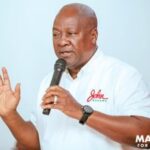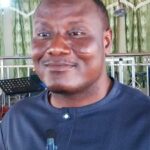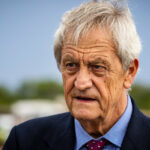The largest photography library in Africa has opened in Ghana’s capital, Accra, showcasing the work of the continent and diaspora’s forgotten, established and emerging talent.
Founded by Ghanaian photographer and film-maker Paul Ninson, the Dikan Center houses more than 30,000 books he has collected. The first of its kind in Ghana, a photo studio and classrooms provide space for workshops while a fellowship programme is aimed at African documentarians and visual artists. An exhibition space will host regular shows, the first of which is Ahennie, a series by the late Ghanaian documentary photographer Emmanuel Bobbie (also known as Bob Pixel), who died in 2021.
The bond-trader-turned-photographer Brandon Stanton, author of the book Humans of New York, who kickstarted the crowdfunding campaign that helped to establish the Dikan, attended the opening with Ninson, whom he met while the latter was living in New York.

As well as books of work by pioneering black photographers, such as Gordon Parks, who was the first African American photographer to have a staff position at Life magazine, and publications including National Geographic, there are rare books including one signed by Stephen Hill, who was governor of Gold Coast as Ghana was known before independence, dated 1852.
Ninson was studying at the School of the International Center of Photography in New York when he began collecting photography books.
“I started buying African photo books, with the idea of sharing them with young photographers back home, but as my collection grew, it dawned on me that I could create a library dedicated to photography and visual education, so I started reaching out to booksellers for donations. I also received donations from private galleries and collectors,” says Ninson.

West Africa has a long history of photography, which was introduced by explorers and governors in the early 1840s. It was soon picked up by African entrepreneurs, who often worked as itinerant photographers, such as George Lutterodt, who ran pop-up studios and opened a business in Accra in 1876. In the 20th century, pioneering photographers – including renowned Malian portraitists Seydou Keïta, and Malick Sidibé, and Ghanaian photojournalist James Barnor, who established Ghana’s first colour processing lab – captured social, cultural and political changes through their work in the fashion and music worlds.
Ninson’s vision for Dikan, which means “take the lead” in Asante, is to celebrate this rich visual history and the accomplishments of African artists, as well as offering inspiration and resources to emerging photographers.

Rita Mawuena Benissan, a Ghanaian-American artist and founder of Si Hene, a non-profit foundation that collects archives telling stories about Ghana’s royal history, welcomed the opening of the centre. “In a state where there are no archives for people to refer back to their history, it becomes very problematic. When you are able to have a point of reference, it’s much easier. I’m excited and I can’t wait to visit Dikan.”
Self-taught Ghanaian photographer and film-maker David Nana Opoku Ansah said the centre would “change everything” for emerging photographers. “[Until now] I have sourced most research materials on the internet. This centre will will be a treasure trove for image-makers like myself because it gives us the opportunity to dig deeper and create more meaningful work that stands the test of time.”





